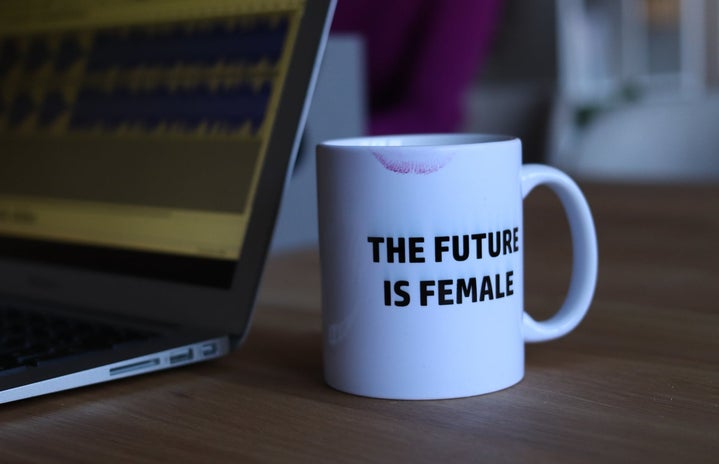In the early 1990s, the sounds of Nirvana and Sonic Youth dominated the underground airwaves. While this was a transformation of the punk movement, it was still dominated by men channeling their rage into drum beats. Although many of the bands at the time were moving away from toxic masculinity, there was a severe lack of representation of female bands.
To fill that void, a new movement rose that exceeded their anger. This was known as, RIOT GRRRL, calling on women to move from the nosebleeds to moshing in the front row.
It also happens to be the inspiration behind Amy Poehler’s latest film “Moxie” which was released on Netflix in March. The film follows Vivian who starts a zine to expose the sexism at her school after finding inspiration from her mother’s involvement in the RIOT GRRRL movement of the 1990s. To clarify, “Moxie” simply means determination or nerve to make some noise. Despite the film serving as an okay introduction to the RIOT GRRRL movement, some fundamental aspects were not explored in the film.
Here is your in-depth guide to RIOT GRRRL.
Starting in the early 1990s, there was a revolution brewing in the Pacific Northwest, in Seattle, in DC. Women were standing up to the institutions that were trying to silence them. They were normalizing female rage and creating beautiful things out of it through music and zines.
One of the founding sisters of RIOT GRRRL, Kathleen Hanna, wrote in her popular zine titled “Bikini Kill,” “BECAUSE I believe with my whole heart mind-body that girls constitute a revolutionary soul force that, and will, change the world for real…” They were encouraging girls to create their own culture and not stand for the men who tried to control them.
As the movement grew through feminist zines and bands such as “Bikini Kill,” more and more women began to occupy the music space. Young girls across the nation finally saw others who looked like them playing guitars, moshing in the crowd, and screaming “girl power.” Inspired to do the same, girls formed other influential bands such as Bratmobile and Sleater Kinney.
Furthermore, in “Moxie” some of the students wore stars and hearts on their hands to show support for the feminist zine. According to “Girls to The Front: The True Story of The RIOT GRRRL Revolution” by Sara Marcus, RIOT GRRRLS in the early 1990s would draw on their hands to identify each other. Thus girls everywhere created a national network of sisterhood and communicated through iconic symbols, letters, and popular zines.
As the movement gained fruition, the modern-day RIOT GRRRL began to be even more inclusive. Women were embracing what made them intersectional. They openly discussed their queer identities, racial identities, and found solace in one another.
However, this was one of the faults of the film. They didn’t spend enough time showing intersectional feminism which is the only type of feminism. The film largely glossed over the narratives of the people of color and instead focused solely on Vivian. What the film gets wrong is that RIOT GRRRL itself has morphed into a feminist movement that has declared “girl power” and is demanding racial justice.
According to the “Riot Grrrl Collection” by Lisa Darms and Johanna Fateman, The “Heaven to Betsy” zine flyer from 1994 stated that “everything in punk and alternative scenes is still owned by white men and so many of the same racist and sexist structures still exist… I want to work on building a community that is not male-controlled, that deals with racism and sexism, and where people are not too afraid of not being cool to talk about the work they produce.”
Women were becoming frustrated with the dominance of only one race within the movement, so they decided to flip the narrative. Women of different races, classes, and sexualities began actively participating in the movement. They created zines such as Bamboo Girl, Photobooth Toolbox, and Gunk (“Riot Grrrl Collection”, Darms, Fateman).
Out of that sentiment, SISTA GRRRL RIOT was created. It was made up entirely of women of color who were upset that RIOT GRRRL was not as inclusive as they hoped it would be. “Moxie” fails to show the inclusivity and diversity of RIOT GRRRL. While the media focused on the white middle-class girl, there were so many different communities of young women of color creating art.
With that said, the effects of RIOT GRRRL are still felt. Embracing body hair, accepting your blemishes, and celebrating your sexuality were all things that existed in the movement. They are all things that still exist today. From the beginning, women have been using their rage to create meaningful things.
“Revolution grrrl style now” was a popular saying at that time. As far as I know, women are continuing to push forward that revolution. RIOT GRRRL is a sentiment. It is a determination to change the system. It is intersectional and queer and loud. The question is do you have moxie?



